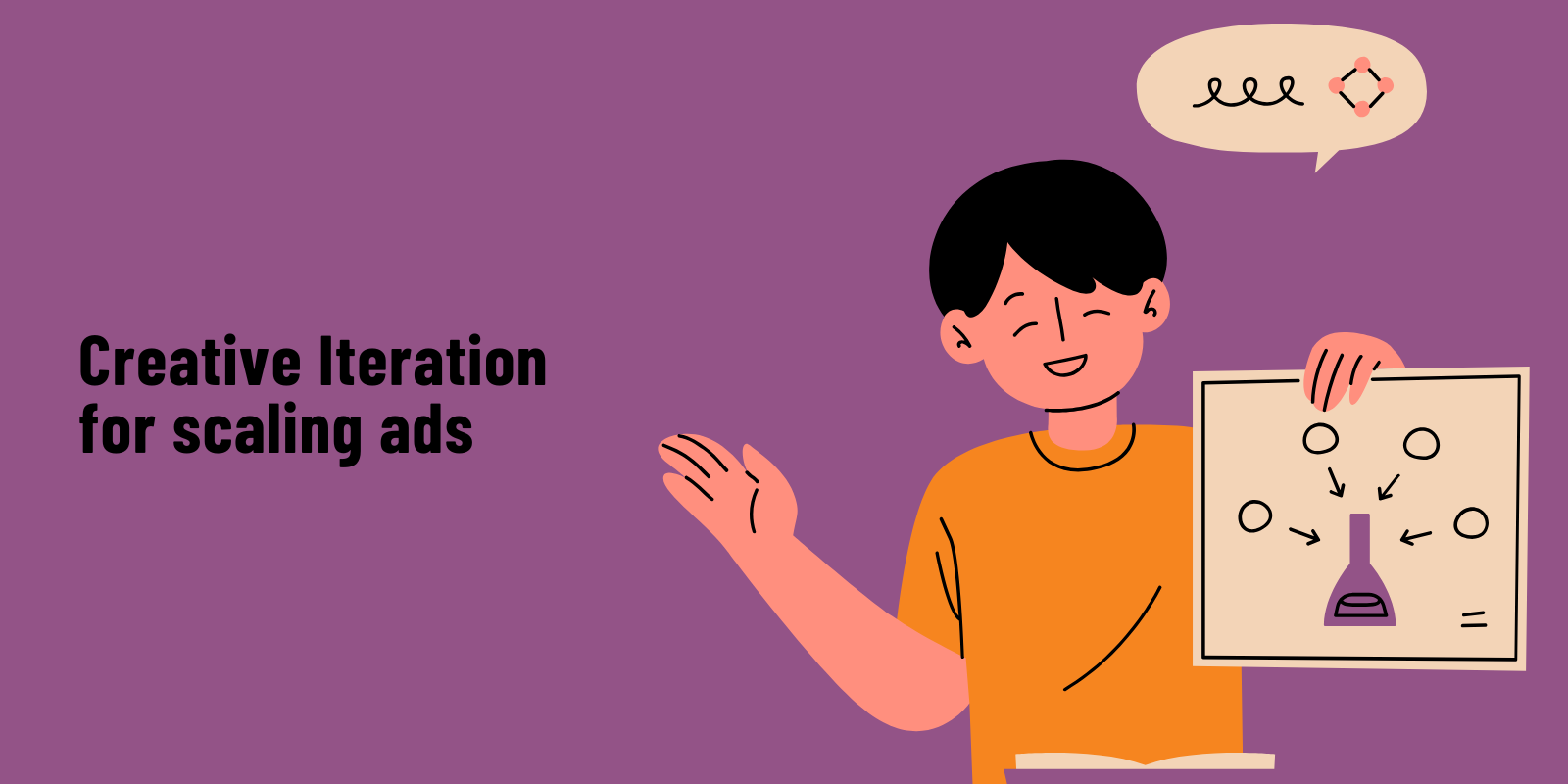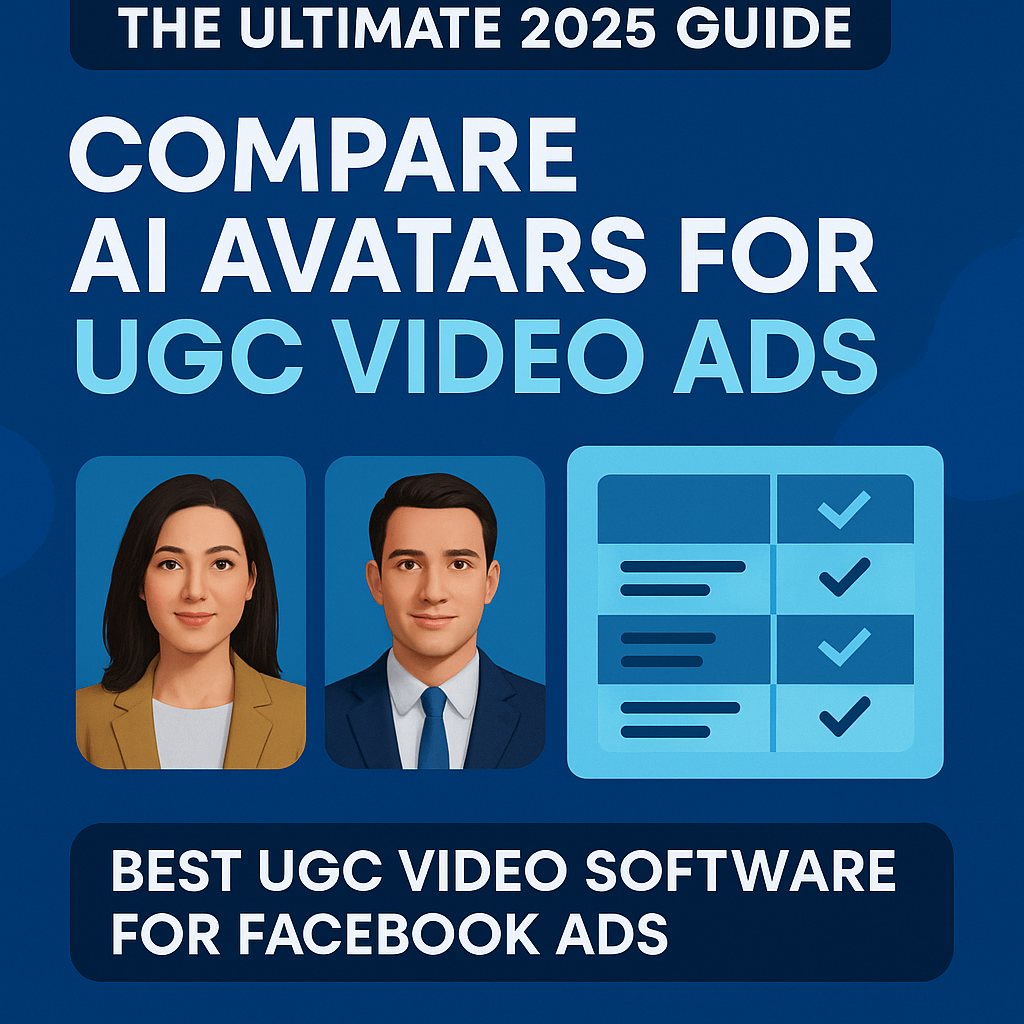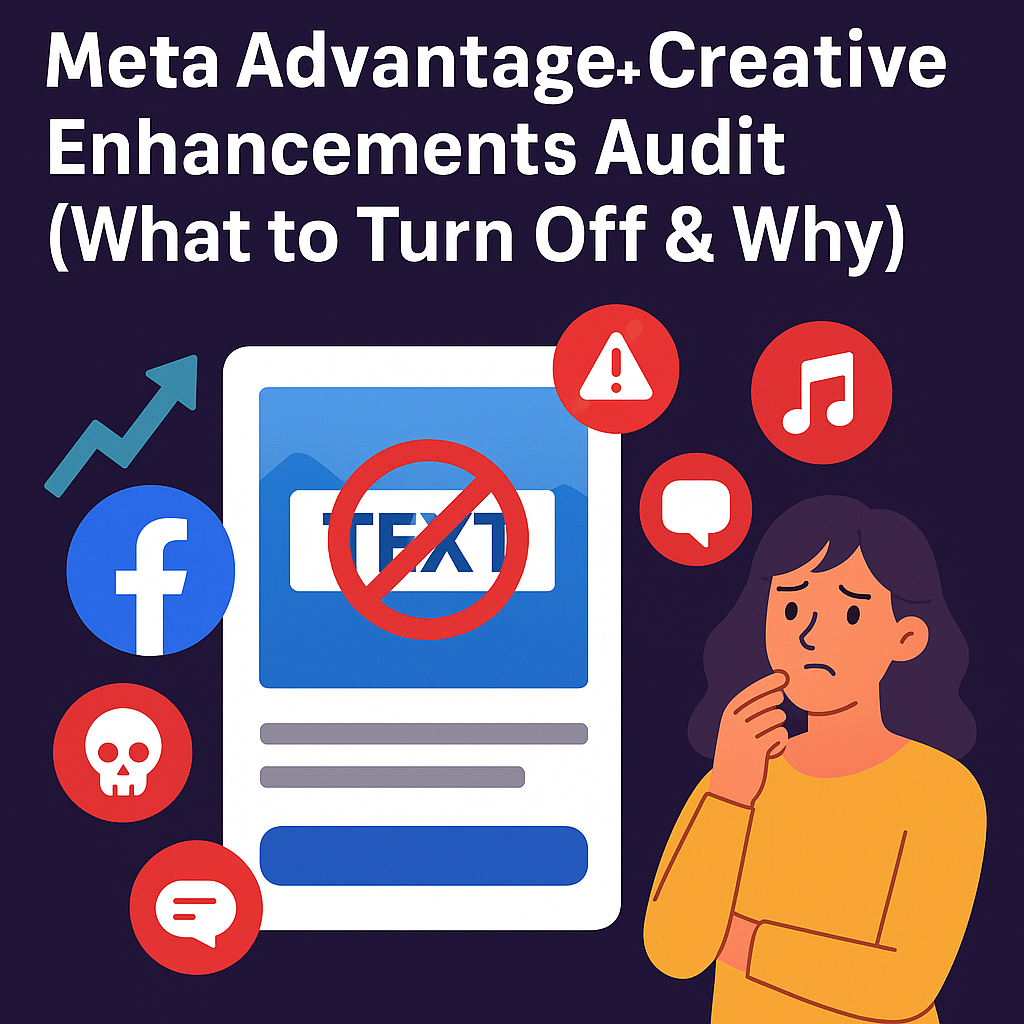Creative iteration is the secret weapon behind the most successful Meta (Facebook and IG) ad campaigns. Yet the biggest mistake I see brands make is assuming a single winning ad will continue to perform forever. They don’t build 510 creative variations off that winning concept. No hooks, no angles, no formats tested. But Meta’s algorithm and your audience do not work like that.
The winning ad should be treated like a signal, not an endpoint. Use it to build a creative library: a set of modular derivatives based on what’s already working. Test variations of that concept across formats (static, video, carousel), placements, hooks, audiences, and visual styles. Always run creative testing in parallel to your scaling efforts.
This guide outlines 8 proven ways to scale ads by iterating on your top-performing creatives, producing fresh, high-converting ad creatives that fuel long-term growth.
Table of Contents
What Is Creative Iteration in Advertising?
Creative iteration refers to the process of optimizing and evolving your ad creatives by making strategic, data-backed changes. Rather than reinventing from scratch, advertisers build upon their winning ads to maintain engagement, prevent ad fatigue, and scale ad performance over time. This process helps brands extend the life of their top-performing creatives while discovering what truly resonates with their audience.
Why Creative Iteration Matters: Beyond “If It Isn’t Broken”
When an ad is performing, the instinct is to keep it running. After all, if it isn’t broken, why fix it? This mindset, while seemingly logical, is a common pitfall in digital advertising. Sticking with the same version too long can lead to stagnation or ad fatigue.
When an audience sees the same ad repeatedly, they become desensitized to it, resulting in a significant drop in click-through rates (CTR) and an increase in cost per acquisition (CPA). Data from Meta Business shows that ad fatigue can set in after just 7 to 10 days in high-frequency campaigns, causing performance metrics to plummet.
Look at how Brightland approaches this challenge. Their campaign for The Everyday Set isn’t anchored to a single headline or message. Instead, they’ve taken one high-performing creative structure and spun it into over a dozen variations, each featuring a distinct headline that tests a different messaging angle.

In the example above, notice how consistent the visual foundation remains: same background, same product staging, same layout. What changes is the angle:
- Origin story: “Cold pressed from California sunshine”
- Emotional resonance: “I couldn’t find olive oil, so I made it.”
- Functional benefit: “One for heat. One for finish.”
- Founder’s POV: “We spent 3 years designing this bottle.”
- Product quality: “Real olives. Real farms. Real flavor.”
- Consumer insight: “Too many oils cluttering your kitchen?”
This approach is incredibly strategic. By holding every variable constant except the headline, Brightland isolates what’s actually resonating. Are users clicking because of the founder story? Are they more motivated by aesthetic simplicity or culinary utility? Each headline is a micro-test that delivers macro-insight.
Once they identify which headlines outperform, Brightland can spin out new creatives that lean even further into that winning message. That might include a UGC explainer expanding on “Too many oils cluttering your kitchen?” or a short-form video on the brand’s farm-sourcing process to support “Real farms. Real flavor.”
This is creative iteration at its best: using a proven framework to systematically discover what message pulls, then scaling that angle across formats.
Creative iteration is the antidote. By testing variations in message, visuals, or format, you unlock:
- Longer lifespan for top-performing creatives
- Clarity on what’s driving conversions
- Fresh content without starting from scratch
- Better results without increasing spend
- Reduced risk of ad burnout
So where do you start? It begins with identifying what’s actually working.
Discover What Drives Top-Performing Ad Creatives
Your ad creative has multiple components such as headline, image, message, and call-to-action (CTA). But many marketers make changes without a strategy. Before editing, ask what’s really doing the heavy lifting.
Look closely at your top ads:
- Is it a unique value prop or pain point being addressed?
- A specific image or visual style?
- The format such as static, video, or UGC?
- A compelling hook or surprising stat?
Use A/B/C testing to isolate variables. For example, test 3 headlines with the same image and CTA. Analyze ad performance metrics and leverage creative analytics tools like Motion, AdCreative.ai, or Meta’s Creative Center to uncover what consistently performs.
Quick Summary: How to Scale Winning Ads With Creative Iteration
- Repurpose top-performing ad creatives into new formats (video, story, carousel)
- Add trust with reviews, press mentions, or testimonial overlays
- Grab attention with bold headers and urgency labels
- Swap visuals like people, setting, or style to avoid fatigue
- Reframe the problem your product solves in different ways
- Feature new creators or combine multiple personalities
- Remix visuals with small tweaks to keep content feeling fresh
- Highlight new benefits or underutilized product angles
8 Creative Iteration Tactics to Scale Winning Ads Using Top-Performing Creatives
Ready to transform your ad performance? Here are 8 proven creative iteration tactics that will help you extend the life of your top-performing ad creatives and unlock new levels of scale and ROAS:
1. Repurpose Winning Ad Creatives Into New Formats
This is the most underrated tactic and the one I use the most. Repurposing can be applied across all other tactics. If a hook works in a static image, try it as a reel or a UGC video. If a testimonial performs in a carousel, try it as a full-page story.
Why it works: Different platforms and users respond to different formats. Reusing high-performing elements across static, video, story, and carousel formats helps scale ads efficiently.
Actionable Tip: Animate a winning image with subtle movement or text overlays to convert it into a short video.
2. Add Trust Builders to Ad Creatives
This tactic is frequently oversimplified. Many brands assume that simply stating the number of reviews is enough to build trust. But trust is not a static concept—it’s dynamic, contextual, and deeply influenced by framing.
We used to run ads that said “4,000 5-star reviews.” They performed well enough. But then we tested a variation that swapped the review count for broader social proof: “120K Customers Love This.” That small language change led to a 40 percent lift in conversions, with higher CTR and longer landing page dwell times.
Why? Because “120K customers” isn’t just a review metric. It’s perceived momentum. It triggers curiosity, FOMO, and a sense of credibility that reviews alone often can’t.

Why it works: Lightweight trust signals build credibility and overcome objections.
Actionable Tip: Measure how each version impacts CTR, CPA, and landing page engagement. You’ll often find that perceived credibility converts better than long-form persuasion.
Trust builders are not optional, they’re conversion accelerators. And when integrated intentionally, they can be the difference between a good ad and a consistently scalable one.
3. Track and Analyze Creative Performance with Motion
We use Motion to track creative effectiveness across campaigns. Motion helps us quickly identify top-performing creatives by visualizing trends in hook performance, visual format, and engagement metrics. This enables fast decision-making at scale, especially when running multiple variations across several campaigns. There are other options on the market that can help with this as well, like MagicBrief.
Motion also helps us create a feedback loop between creative ideation and performance. We can pinpoint which angles are peaking, what formats are fatiguing, and where to double down.
We use Motion to monitor the performance of our tests, as it is a crucial part of our iterative process. For example, in the report below, our headline remains consistent, but the creative elements differ. We know that our headline is strong, which allows us to concentrate our iterations primarily on the actual creative images.

Actionable Tip: Set up Motion dashboards to monitor creative trends weekly and tag your creatives by hook, visual, and CTA to accelerate learning. product pages — e.g., “Over 10,000 Sold” — and place them at the top of your creative.
4. Use Clear Benchmarks for Decision Making
When we are working with limited budgets, we evaluate creative performance based on what happens after the ad reaches about 2,000 users. At that point, we can begin to spot engagement signals like CTR, outbound clicks, and landing page views.
If we are working with higher spend, we can identify winning signals within the first 2 to 5 days. In those cases, volume accelerates learning, allowing us to spot a breakout creative much faster.
Actionable Tip: Define your decision threshold based on both budget and time constraints. Small budgets benefit from thresholds like 2,000 impressions, while large budgets should use ROAS or cost-per-result benchmarks within the first few days.
5. Apply a Simple Creative Testing Workflow
When resources are tight, I recommend a streamlined three-step approach:
- Analyze all top-performing ad copies, angles, and hooks to identify the strongest performer or potential breakout concept
- Review how that core idea has been presented so far and identify creative gaps or unexplored formats
- Produce and launch new creative iterations based on those findings
This process is lightweight but effective. It keeps creative testing intentional without overwhelming small teams. One way to speed up production is by using AI-generated UGC tools. Instead of coordinating with creators, you can input your winning hook or message into platforms like HeyGen or Synthesia and instantly generate video variations in a creator-style format. This lets you quickly validate angles in a low-lift, scalable way so you can reserve your live UGC budget for the ideas that prove out in testing.
Actionable Tip: Document every creative test in a shared tracker. Include the hypothesis, variable, outcome, and next step so you can iterate intelligently.
6. Feature New Creators or Combine Multiple Voices
New faces bring fresh energy to familiar messages. When you rotate in different creators, you reset attention and boost credibility. I’ve seen creative rotation with diverse UGC talent lift performance simply because each face appeals to a different segment of the audience. Even better, combining three voices into one video allows you to stack benefits in a single scroll-stopping asset.
The brand Asset demonstrates this masterfully. In a niche that could easily be dismissed as “unsexy” or “too clinical,” they’ve built an incredibly engaging campaign by leading with real people, real expressions, and punchy, benefit-forward copy. Their winning formula includes:
- Character-driven casting: Each person reflects a different use case or demographic
- Highly legible, bold headlines: Headlines like “A New Must for New Moms” or “Confidence Begins Below” deliver instant clarity and segmentation
- Relatable product interaction: The product is always in-hand, close to the face, creating visual trust
- Minimalist visual language: White or neutral backgrounds keep the attention on the face and the message
The result? A series of ads that feel native to the scroll but stand out just enough to pause the thumb.

Why it works: Viewers engage more with content that feels native, real, and varied. Fresh faces prevent visual burnout and strengthen message resonance.
Actionable Tip: Test creator mashups where each person focuses on a unique benefit or angle. End with a shared CTA to unify the message.
7. Remix Ad Creatives with Visual Tweaks
Small visual changes can produce big results. Add captions, change the color grade, use dynamic cropping, or update the hook overlay. These fast, low-effort edits are especially effective for extending the life of proven winners. I often see brands get 20 to 30 additional days of strong performance by remastering creatives instead of starting from scratch.
Dose’s 25% Bundle campaign is a masterclass in visual remixing. The product stays the same. The offer doesn’t change. But look closely — each variation introduces:
- Different background environments (fruit, spices, texture overlays)
- Subtle product placement shifts
- Hand vs no-hand versions
- Split-color backgrounds to differentiate SKU
- Contrast in warmth and saturation to vary mood
This lets each ad feel “new” while delivering the same message and CTA. More importantly, it keeps your audience from skipping due to visual fatigue.

Why it works: The brain craves novelty. Even subtle differences keep content feeling fresh without losing the proven core.
Actionable Tip: Use a swipe file of your best performers and run 3 remix variants for each. Change intro hooks, overlay copy, and add new music to revive old winners.
8. Highlight a Different Product Benefit or Angle
Great creatives don’t have one message. A winning product often solves multiple problems, but most brands only lead with one. I regularly audit ad accounts and find that 90 percent of the spend is focused on just one benefit. That’s a missed opportunity.
Take a brand like Prose. Their “before and after” format is instantly recognizable, but what makes it powerful is how they iterate within the same structure. They take the same visual formula, transformation shots, UGC-style delivery, and rotate through multiple messaging angles:
- One ad focuses on hair volume and confidence.
- Another highlights damage repair and emotional relief.
- A third targets scalp health and ingredient integrity.
- Yet another speaks to relationship-based storytelling (e.g., “How I helped my husband…”).
Each of these creatives speaks to a unique buying motivation, even though the product remains the same.
That’s creative iteration at its most strategic: not just testing hooks or visuals, but re-architecting your angle to align with different customer pain points, values, and goals.

Why it works: Different audiences care about different things. One customer might want science-backed results. Another might value self-care rituals. Another just wants to feel like their partner notices them again. Different angles unlock different emotional levers — and Prose nails this with precision.
Actionable Tip: Revisit your product reviews, support tickets, and survey data. Look for patterns in what customers say they love most, or what problem they say you helped solve. Then build a creative around each of those benefit clusters. Pro tip: Don’t just swap out the copy. Reframe the entire message, visual cue, and CTA to reflect that unique benefit.
Final Thoughts: Treat Winning Ads Like Launchpads, Not Finish Lines
Top-performing creatives are just the beginning. Real growth occurs when you build upon what works, not when you chase the next shiny idea. With creative iteration, you scale smarter using insights, not guesswork.
This approach is not just for big brands with big budgets. The more limited your resources, the more critical it is to stretch every winning asset.
Here’s how to get started:
- Identify your current top-performing ad
- Break it down by hook, format, and visual style
- Apply 3 to 5 of the tactics in this guide to generate variations
- Launch and track results
- Double down on what wins again
Treat your creative process like a feedback loop, not a one-and-done launch. The more you iterate with intention, the faster you find your next scalable winner.
Frequently Asked Questions (FAQ)
How often should I iterate on my ad creatives?
To stay ahead of ad fatigue and maximize your top-performing ad creatives, iterate weekly or biweekly for high-budget campaigns. If your budget is limited, a monthly iteration cycle is still effective. Creative iteration is crucial for achieving a strong return on ad spend (ROAS), enhancing click-through rates (CTR), and scaling winning ads with precision.
What are the biggest signs of ad fatigue?
Ad fatigue shows up as declining CTR, rising cost per result (CPR), fewer saves and shares, and shorter video watch time. If your top-performing creatives suddenly dip in engagement or ROAS, it’s time to refresh the concept through strategic creative iteration tactics.
Should I pause my best ad while testing new ones?
No. Your winning ad is a proven asset. Keep it running while testing new creative variations. This allows you to scale your top-performing ad creatives and validate new concepts without losing momentum in performance. Creative iteration works best when you treat each winner as a launchpad.
Do I need a lot of budget to do creative iteration?
Absolutely not. Creative iteration is scalable for all budget sizes. Even with a daily ad spend of $50, you can test top-performing ad creatives by setting clear benchmarks and monitoring metrics like CTR, landing page views, and engagement after 2,000 impressions.
How do I know which part of the creative is actually working?
Use tools like Motion, Meta Creative Center, or AdCreative.ai to tag and analyze your ad creatives by hook, format, message, and visual. This allows you to identify the core elements behind your top-performing creatives and scale those aspects through creative iteration.
What’s your favorite creative iteration tactic?
Repurposing top-performing ad creatives into new formats. This strategy allows you to take what’s already proven, like a strong hook or visual, and adapt it into video, story, carousel, or UGC formats. It’s the fastest way to scale winning ads across placements without reinventing your creative process.
Can creative iteration help improve my CTR?
Yes, absolutely. One of the most reliable ways to boost click-through rates (CTR) is to iterate on your top-performing ad creatives by using new hooks, visuals, and headlines. Creative iteration helps keep your ads fresh, engaging, and optimized for user attention.
How do I build a creative iteration system that lasts?
Yes and it’s quickly becoming one of the most efficient tools in the creative iteration toolkit. AI-generated UGC platforms allow you to produce testimonial-style, explainer, or creator-led videos using text inputs from your top-performing hooks, reviews, or headlines. This means you can test angles at speed and scale without waiting on creator outreach or edits. It’s not a replacement for human creators, but a powerful way to validate ideas before you scale with live talent.




